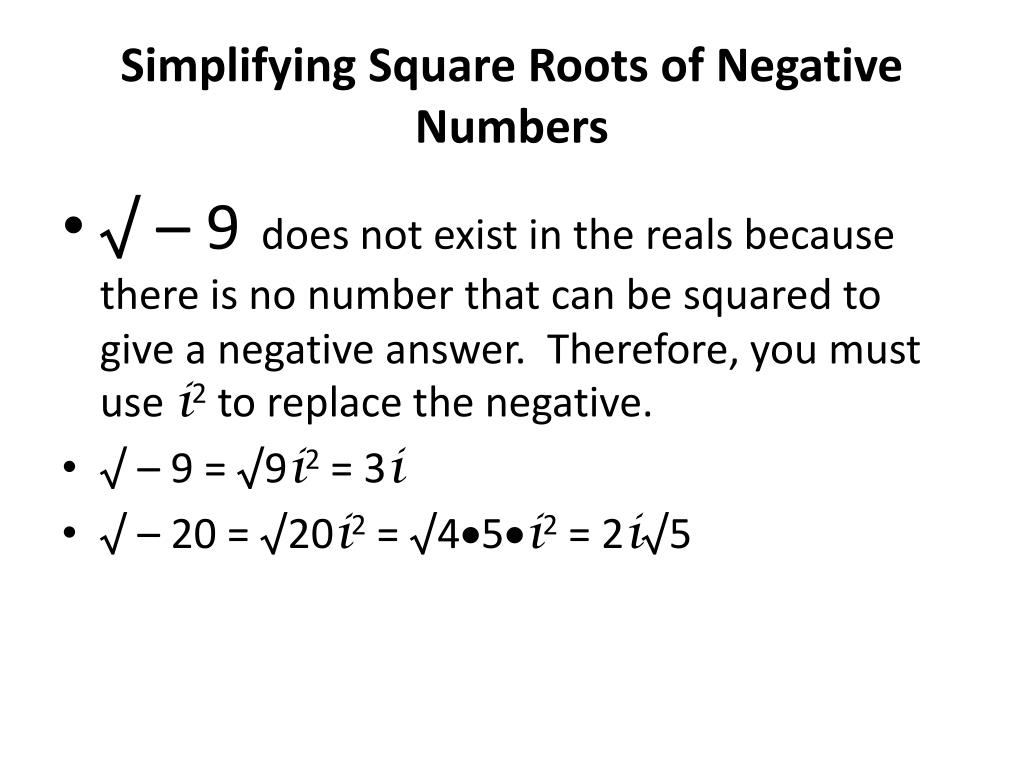
NEGATIVE SQUARE ROOT HOW TO
Remember that we can take the square root of any complex number – you can learn more about how to do this in my article here. An imaginary number is a specific type of complex number with a real part that is zero (that is, a = 0).įor example, the square root of -4 is (-4) 1/2 = 2i, which is an imaginary number (the index of the radical is 2, and the radicand is -4).

More specifically, a negative radicand and an index of 2 will always give us an imaginary number. Remember that a complex number has the form a + bi, where a and b are real numbers and i is the imaginary unit (that is, i is the square root of -1, or i 2 = -1). When the radicand is negative and the index is even, we get a complex number (more sepcifically, an imaginary number) as a result. Negative Radicand & Even Index (A Negative Number Inside A Square Root) Each solution is the opposite (negative) of the other one. This gives us solutions of x = N 1/2 and x = -N 1/2. We are solving for x, the square root of N, and the key equation is: If you are wondering why every positive real number has two roots, here is the explanation. This is not the same thing as (-x) 1/2, which in words is “the square root of –x.” If you want the negative square root, you would use the expression –(x 1/2), or in words “the negative of the square root of x”. An alternative way to express the principal square root of a positive number x is with a power of ½: x 1/2.

When we take a square root, the number under the radical is the radicand, and the index is 2. Square roots, along with the general formulaįor a positive number N and the two square roots.

Principal square roots, and their negative The table below gives examples of numbers, their principal square roots, and their negative square roots, along with the general formula for a positive number n and the two square roots. So, -3 is the other square root of 9, since (-3) 2 = (-3)(-3) = 9 (a negative times a negative is positive). To get a negative square root of a positive number, we take the opposite (negative) of the principal square root. Likewise, the principal square root of 16 is +4. This comes from the fact that every number (except zero) has two square roots that are opposites (negatives) of each other. Can A Square Root Be Negative?Ī square root can be negative if we take the opposite of the principal square root of a positive number. We’ll also answer some other common questions about roots and radicals.

In this article, we’ll talk about square roots and when they are negative. Of course, if take an odd root (3 rd root, 5 th root, etc.) of a negative number, there will always be a negative root we can find. Any positive number has both positive and negative even roots (square roots, fourth roots, etc.) However, the square root of a negative number is imaginary, not negative. So, can a square root be negative? A square root can be negative – for example, when we take the opposite of the principal square root of a positive number. In some cases, we might need to bring complex or imaginary numbers into the discussion. Square roots and negative numbers are connected in several ways.


 0 kommentar(er)
0 kommentar(er)
